Under what conditions in winter is it acceptable to store vegetables on the balcony?
Traditional winter vegetables are beets, carrots, onions, garlic and potatoes. By setting up a vegetable storage box on your balcony, you can enjoy fresh root vegetables all winter long. They last a long time, retaining vitamins and minerals. Winter is an unpredictable time, but it rarely passes without frost. There are ways to help preserve vegetables on the loggia, even if it is bitterly cold outside.
It is impossible to accurately calculate the difference in temperature outside and inside the loggia, since the coefficient depends on many factors:
- quality of windows (plastic windows boast the best thermal insulation);
- thickness of the glass unit;
- glass unit area;
- loggia size;
- temperature inside the apartment, etc.
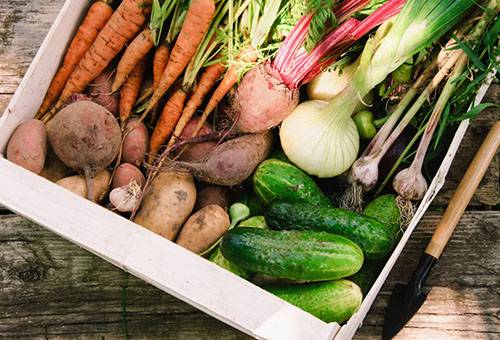
Storage conditions for vegetables and some fruits
To decide whether it is possible to store vegetables and even some fruits on the balcony in winter, place a thermometer there and monitor the temperature. Compare the results with the table below.
| The product's name | Storage temperature |
| Potato | +2 to +3 °C |
| Carrots, beets, turnips | From 0 to +2 °C |
| Garlic | -1 to +3 °C |
| Onion | From 0 to +1 °C |
| Cabbage | -1 to +2 °C |
| Pears | -1 to +5 °C |
| Apples | +1 to +2 °C |
If the thermometer often drops below 0 °C, you should think about installing a special box for storing food in winter. You can do it yourself without major expenses. All it takes is a little physical and mental effort.
To store vegetables you can use:
- heating cabinet;
- flexible cellar;
- plastic box;
- wooden box with a layer of sawdust;
- homemade heated box;
- old refrigerator.
Thermal cabinet
This is an option for a purchased device for preserving crops in winter. It costs a lot, but its price is justified, since it saves the apartment owner from unnecessary hassle and the risk of being left without winter supplies. Cabinets come in any size (individually for each loggia). They operate on mains power, so you should take care of the electrical wiring on the balcony.
Thermal cabinet Not only does it independently regulate the temperature, it is equipped with a ventilation system. You won't need to constantly ventilate bags of root vegetables. The risk of food spoiling is significantly reduced. The temperature in the container usually ranges from +2 to +7 °C, which prevents the fruit from rotting.
Flexible cellar
“Balcony cellar” is a budget version of a thermal cabinet. Outwardly, it looks like a large backpack; when folded, it is light and compact. It is made of three-layer waterproof fabric and padding polyester, equipped with a thermoregulation sensor and also works from the electrical network. Its advantages:
- in summer it can be folded and hidden on a shelf so that it does not clutter up half of the loggia;
- it “pulls” no more electricity than a regular light bulb.
Plastic box
Storing vegetables in plastic boxes is a method for those who are too lazy to deal with a device of a more serious design. However, if the climate in your region is not too harsh, you can use such containers. They need to be installed not on the floor, but on racks so that they are 15 cm from the floor and walls. Vegetables must be ventilated. Placed bags of potatoes or other vegetables should be sprinkled with sawdust.If the temperature on the balcony drops below 0 °C, insulate the boxes with blankets, old jackets or polystyrene foam.
Wooden box with a layer of sawdust
To make such a container you do not need any special skills. All you need are two boxes of different sizes and a bag of sawdust. One box should be larger, the second smaller. A sheet of thick cardboard or fabric is placed at the bottom of a large wooden container and a 10 cm layer of wood shavings is poured. A smaller box is placed on top of the sawdust and the holes between the side walls of the thick cardboard are filled with sawdust (the distance between the walls of both boxes should be at least 10 cm).
Advice
Potatoes can be stored in the same compartment as beets: they perfectly absorb excess moisture.
Vegetables must be covered with a lid during storage. If the loggia is not insulated and the temperature is often below freezing, the box should be covered with insulating materials. However, experts say that such equipment can preserve the harvest in winter even at a temperature of -15 °C.
Homemade heated box
This invention is necessary for people with an uninsulated loggia, where frosts are often severe. Making it requires some effort and ingenuity. Heating can be arranged in two ways: a hairdryer with low power or 40 W lamps. The hair dryer will turn on automatically, heating the contents of the box and ventilating the air at the same time.
You need to make a frame of the required volume from wooden beams. Attach sheets of plywood to the walls and do not forget about the hole for the pipe through which warm air from the hair dryer will flow. Cover the inside of the walls with insulating foil material.Insert a pipe into the cut hole and make holes in it so that the air in the box is distributed evenly.
The second option is to attach a tin pipe inside the box and place an incandescent lamp inside it. The heat from one light bulb is enough to maintain the required temperature inside the container even in frosty weather.
Old refrigerator
If you are too lazy to make homemade cabinets, and do not have the funds to buy “cellars”, you can use an old Soviet refrigerator (if the size of the loggia and the refrigerator itself allows). Place it on the floor with the door facing up, turning it into a “chest”. It will be able to protect the crop from frost. However, do not forget to periodically ventilate the potatoes or onions, because condensation will collect inside the refrigerator.
Knowing the conditions for storing vegetables on the balcony and all possible ways to protect them from frost, you can preserve the harvest until spring. The most convenient are a flexible cellar and a heating cabinet. But if you do not have the opportunity to purchase such a device, you can build a homemade wooden cabinet, which will bring you a lot of benefits and help you save a lot.
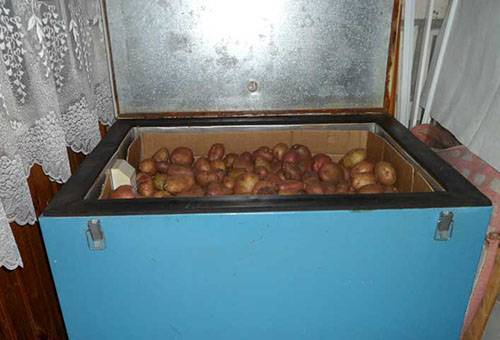
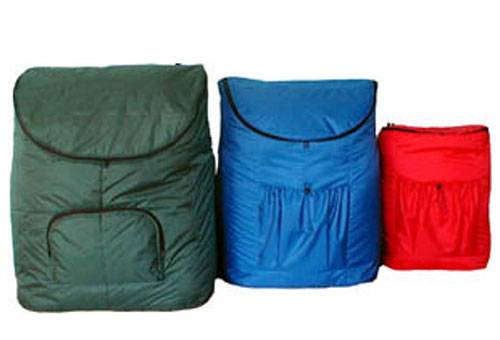
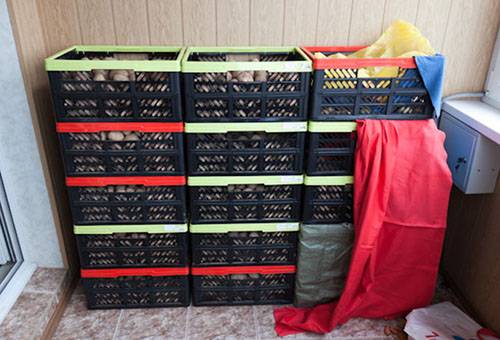
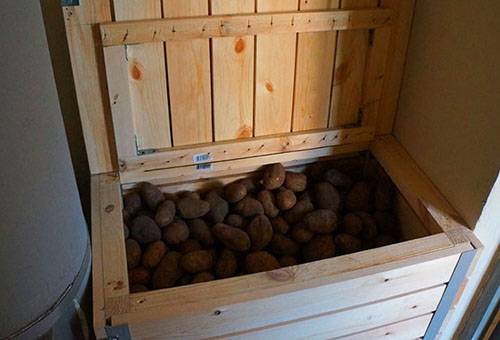
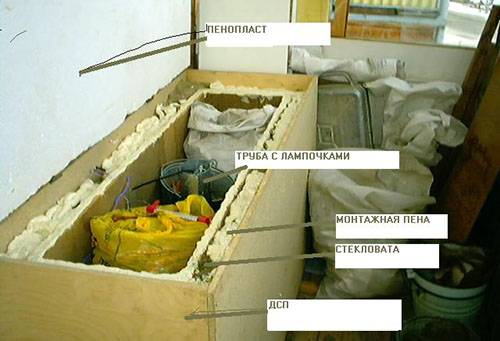
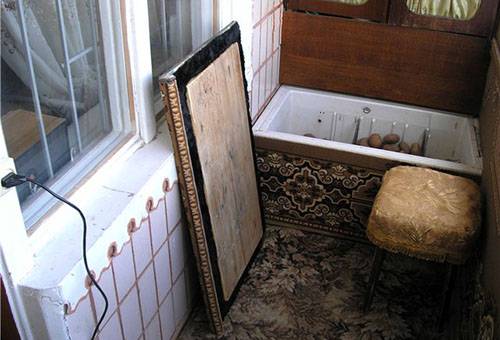
I didn’t even know there was such a thing as a flexible cellar. We need to find where it is sold. I think this is the easiest way to store